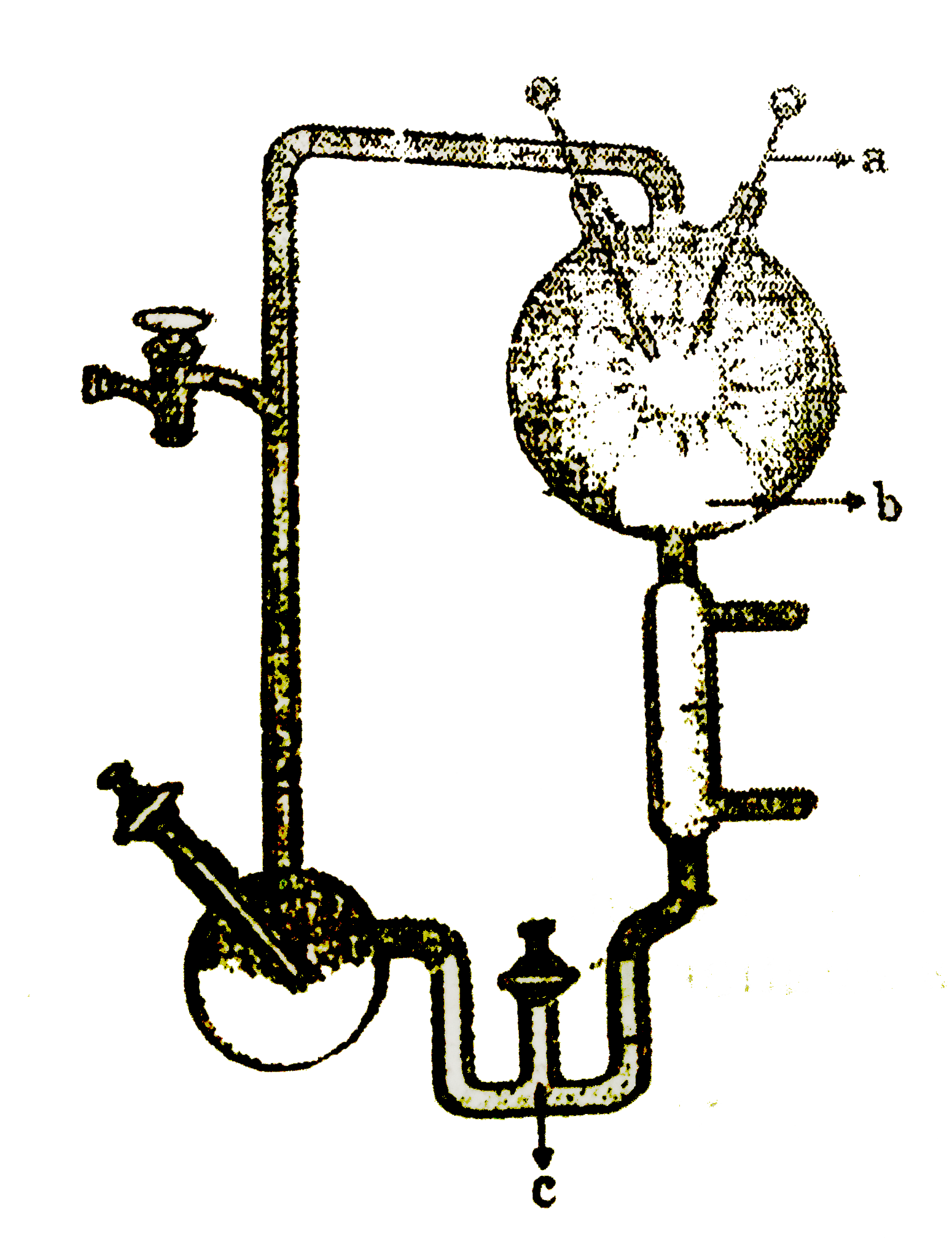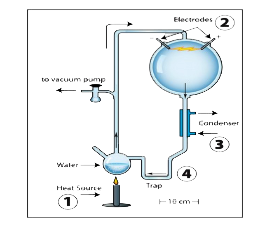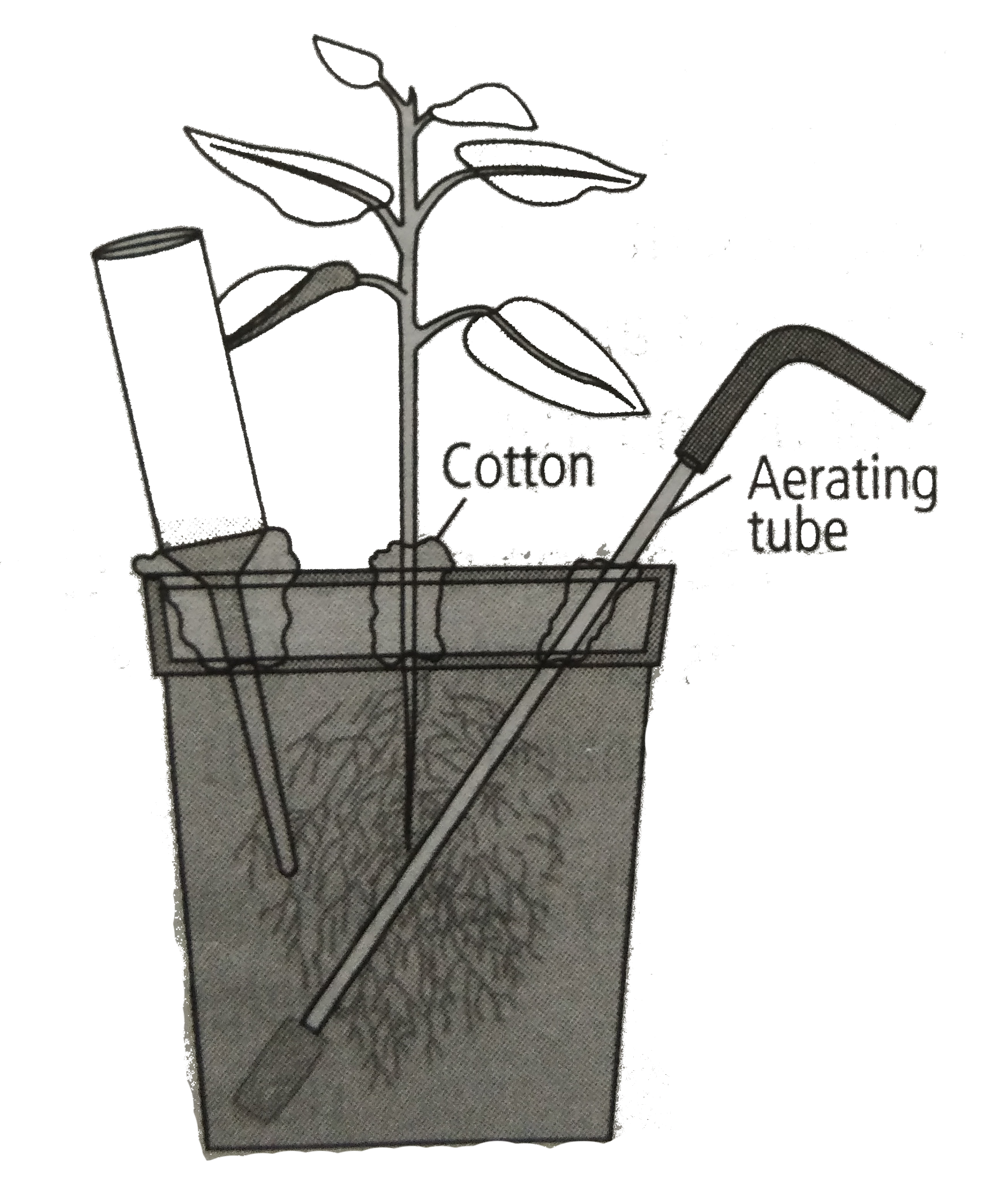Given below is a diagrammatic representation of the experimental set-up used by S.L. Miller for his experiment: a Write the names of different gases contained and the conditions set for the reaction in the flask ‘A’. b State the type of organic molecule he collected in the water at ‘B’. c Write the conclusion he arrived at.
a The gases obtained are CH4 H2 NH3 and water vapour. The closed flask electric discharge was created at 800°C. b Amino acids were collected in the water at ‘B’. c He arrived at the conclusion that life came from pre-existing non-living organic molecules and that formation of life was preceded by chemical evolution.
Related Solutions
Study the diagrammatic representation of S.L. Miller's experiment given below and answer the questions that follow: (a) How did S.L. Miller create the conditions which existed before the origin of any life on Earth (b) Name the organic compound formed and collected at the end of his experiment. (c)Mention the kind of evolution is experiment supports

View SolutionStudy the diagrammatic representation of S.L. Miller's experiment given below and answer the questions that follow: (a) How did S.L. Miller create the conditions which existed before the origin of any life on Earth (b) Name the organic compound formed and collected at the end of his experiment. (c)Mention the kind of evolution is experiment supports
View SolutionStudy the diagrammatic representation of S.L. Miller's experiment given below and answer the questions that follow: (a) How did S.L. Miller create the conditions which existed before the origin of any life on Earth (b) Name the organic compound formed and collected at the end of his experiment. (c)Mention the kind of evolution is experiment supports
View SolutionWhat did S.L. Miller observe in his experimental set-up?
View SolutionWhat did S.L. Miller observe in his experimental set-up?
View SolutionWhat did S.L. Miller observe in his experimental set-up?
View SolutionName the scientist who had used the set-up shown below. Write the purpose of 'a' in the set-up and the conclusion the scientist arrived at.

View SolutionName the scientist who had used the set-up shown below. Write the purpose of 'a' in the set-up and the conclusion the scientist arrived at.

View SolutionIn 1953, S.L. miller, an American scientist, created electric discharge in closed flask containing gases at He obtained.
View SolutionDiagrammatic representation of Miller's experiment is given below. Identify the gases marked A and B:
View SolutionS.L Miller's closed flask contained
View SolutionStudy the experimental set-up given below and answer the following questions: What is your observation for flasks .A. and .B.?
View Solution
(a) State the hypothesis which S.L. Miller tried to prove in the laboratory with the help of the set up given above.
(b) Name the organic compound observed by him in the liquid water at the end of his experiment.
(c) A scientist simulated a similar set up and added and water vapour at Mention the important component that is missing in his experiment ?
View Solution
(a) State the hypothesis which S.L. Miller tried to prove in the laboratory with the help of the set up given above.
(b) Name the organic compound observed by him in the liquid water at the end of his experiment.
(c) A scientist simulated a similar set up and added and water vapour at Mention the important component that is missing in his experiment ?
View SolutionIn 1953, S.L. miller, an American scientist, created electric discharge in closed flask containing which gases at .
View SolutionIn 1953, S.L. miller, an American scientist, created electric discharge in closed flask containing which gases at .
View SolutionIn 1953, S.L. miller, an American scientist, created electric discharge in closed flask containing which gases at .
View Solution
The given experimental set-up is used
View Solution
The given experimental set-up is used
View Solution
The given experimental set-up is used
View Solution